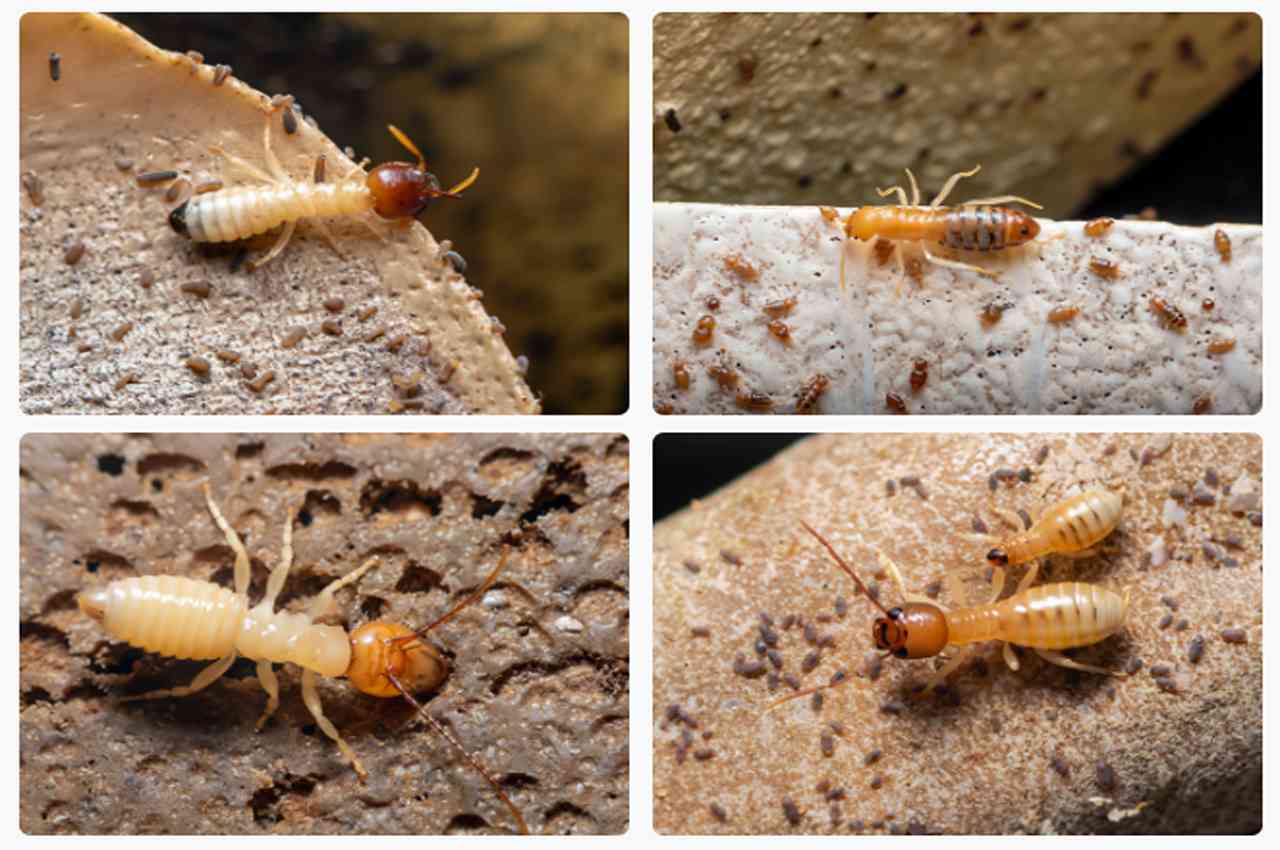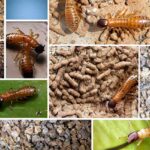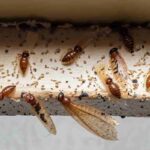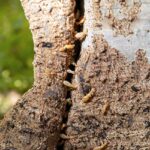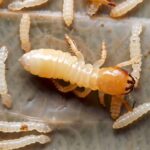Understanding Termite Appearance and find out What Do Termites Look Like to the Human Eye. Termites, “silent destroyers,” may demolish houses and structures. To combat these little but destructive pests, you must understand their appearance, especially to the human eye. Explore termites’ morphological characteristics and variations in this post. By the end, you’ll know how termites appear without magnification, enabling you to identify and avoid infestations.
What do termites look like to the human eye?
Small insects like termites are hard to spot. They are 1/8 to 1/4 inch length and bright white or cream. A long, thin antennae and six legs distinguish them.
Worker termites and reproductive termites are two different kinds of termites. The worker termite, the most common kind, builds the nest, feeds the colony, and raises the young. Reproductive termites swarm with wings in spring and fall.
Here are some termite appearance facts:
- Worker termites, the most common kind, build nests, feed the colony, and raise young. Light white or cream bodies with 1/8 to 1/4 inch length are usual. They have six legs and long, thin antennae.
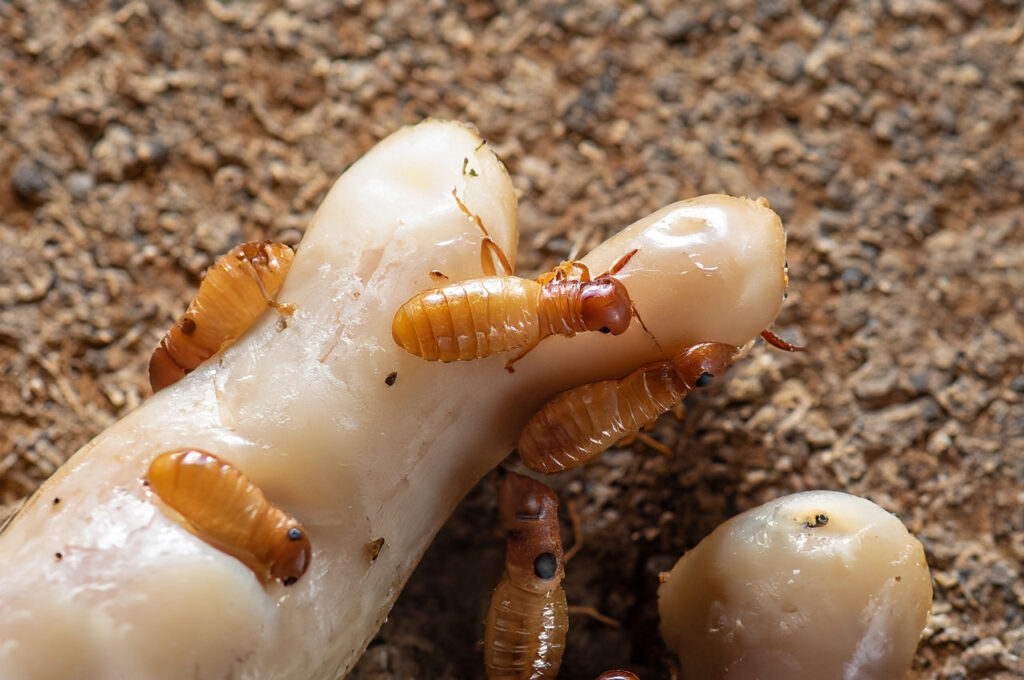
- Spring and fall swarms are winged reproductive termites. Their dark brown or black bodies are larger than worker termites. Its four wings are equal-sized.
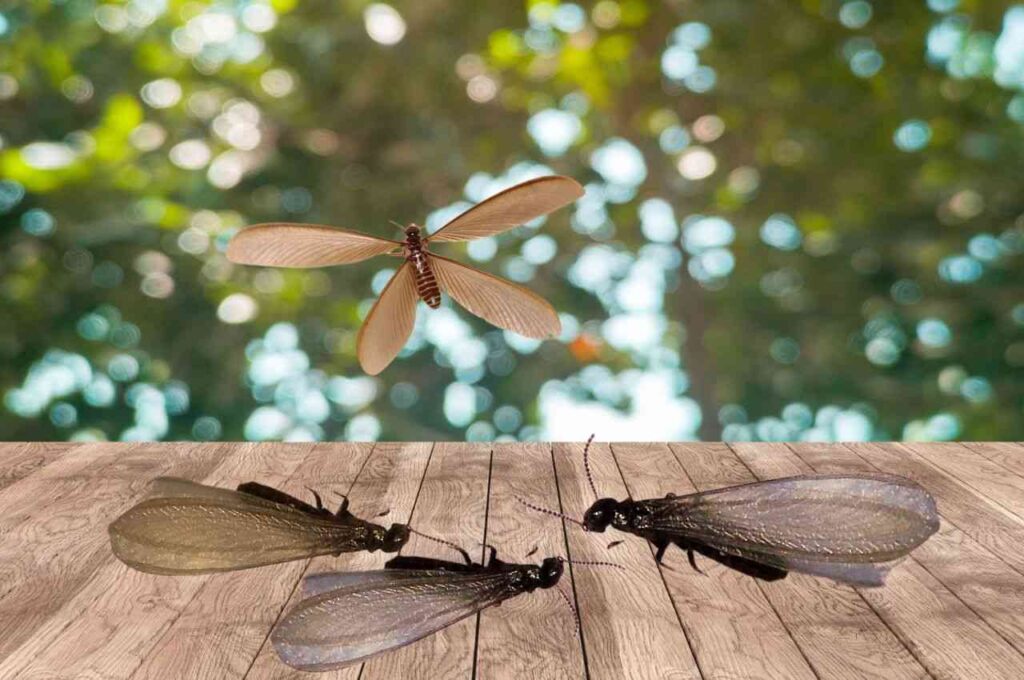
- Remember that not all termites are visible. Subterranean termites and other smaller termites may live in your foundation or walls.
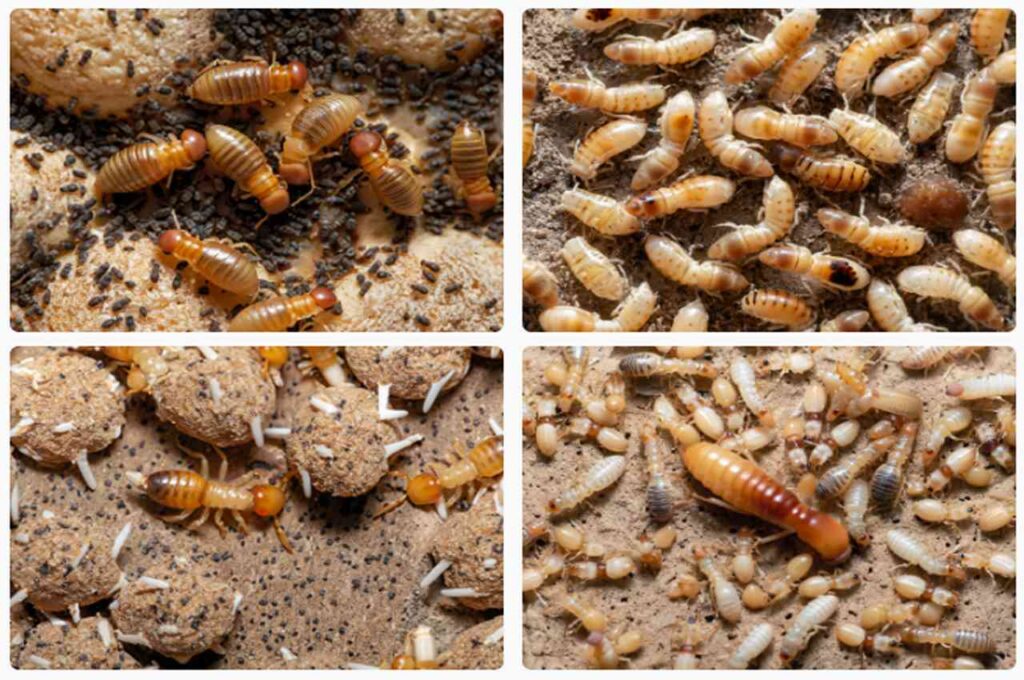
How can I distinguish termites from other insects based on their appearance?
Termites may be distinguished from other insects by their appearance:
| Characteristics | Termites | Other Insects |
|---|---|---|
| Size | Typically 1/8 to 1/4 inch long | Larger than termites |
| Color | Pale white or cream-colored | Typically darker |
| Antennae | Long and thin | Shorter antennae |
| Wings (Reproductives) | Four equal-sized wings | Two wings of different sizes |
| Behavior | Social insects living in colonies | Most other insects are solitary |
More ways for distinguishing termites from other insects:
- Watch for mud tubes: Termites develop these to connect their colony to food sources. These tubes are prevalent in moist areas like home foundations and window and door surrounds.
- Seek termite frass, their droppings. A fine, sawdust-like material surrounds termite-infested areas.
- Look for hollow wood: Termites may eat wood and leaving it hollow. A home with mushy or spongy wood may have termite damage.
What is the average termite size without a microscope?
The typical termite is 1/8 to 1/4 inch without a microscope. These little termites have six legs, a creamy white or cream body, and long, thin antennae. U.S. termites most commonly:
- Subterranean termites, living in dirt, may harm buildings.
- Dry wood termites present in dry wood are rare but nevertheless harmful.
- Formosan termites are the most destructive globally.
These size and appearance qualities assist detect termites, which may ruin wooden structures and need pest control.
What do reproductive termites (swarmers) look like? or What does a termite look like with wings?
Looks may identify swarmers, winged or reproductive termites. Worker termites are 1/4 to 3/8 inch shorter than winged ones. Their long, thin antennae, dark brown or black bodies, and transparent or translucent wings with brown veins differentiate them. Their four equal-sized wings separate them from most insects, which have two distinct sizes. In spring and fall, reproductive termites swarm for mates. Light attracts them, and they flutter in windows and doors. Detecting termites and managing them requires swarmer identification.
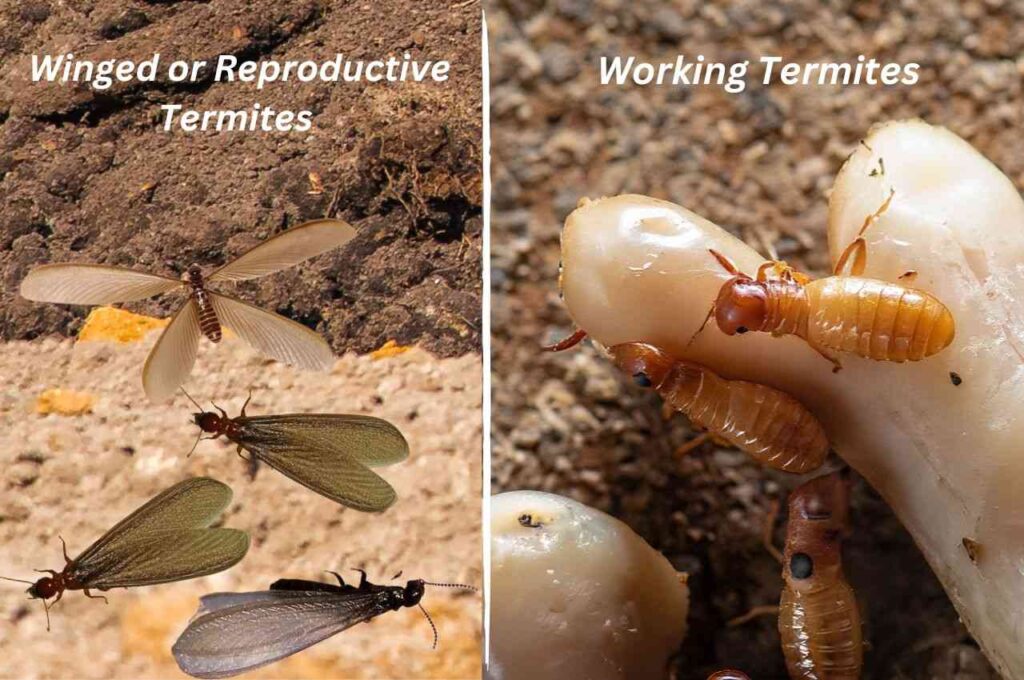
What does termite larvae and eggs look like without magnification?
A termite egg or larva is too small to observe. White or cream-colored termite eggs are 1/16 inch long. The fragile, worm-like bodies of termite larvae are 1/8 inch long and pale or cream-colored. The tiny eggs and larvae are hard to spot without magnification. However, termite eggs or larvae in your home signal an active colony and should be addressed carefully.
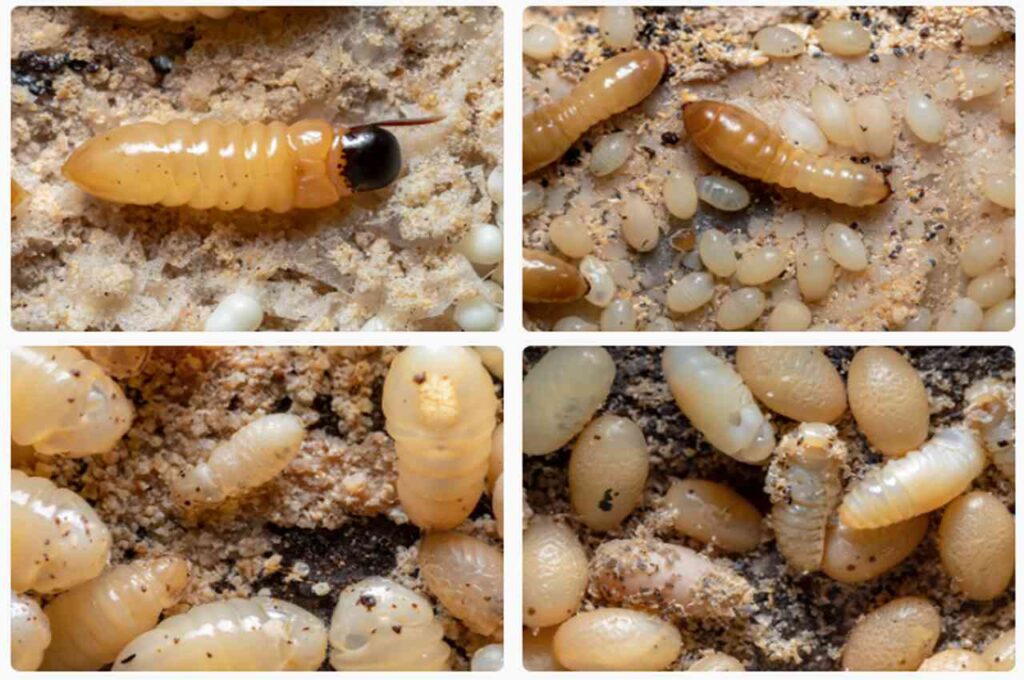
Are termite wings visible, and how can I see them?
Humans can see termite wings. Transparent or translucent wings feature dark veins the termite’s body size. However, termites lose their wings after swarming during spring and fall mating. If you regularly inspect your property, you may uncover these discarded wings. You may have termites near windows and doors, in your foundation, or in wood and rubbish piles. Termite Wings should warn you to contact a pest control professional immediately since even a few termites may damage your property.
Can you visually assess wood or buildings for termite damage?
You can see termite damage in wood or structures, but you must also recognize the subtle signs of infestation. In moist areas, termites develop mud tubes to go from their nests to food supplies near windows, doors, and home foundations. During spring and fall swarming, winged termites in your home are another sign of termite infestation. A thin, sawdust-like powder resembling termite excrement is seen around active termites. Termite damage makes hollow wood mushy and spongy. Finally, termite damage may undermine your home’s structure, producing sagging floors and walls. Early detection and action may save your property.
Can termites be identified by their appearance?
Termites are easily recognizable. These indicators include termites creating mud tubes from nests to food sources near moist windows, doors, or foundations. Another sign of an infestation is winged termites, particularly during spring and fall swarming. Frass, termite debris that looks like sawdust, is another indicator of activity. Muddy or spongy termite-eaten wood deteriorates. Sagging floors or walls may indicate termite damage. These visual clues are needed to identify and fight termites early.
Without proper equipment, do termites seem different at various life cycle stages?
Termites’ visual changes at different life stages may be noticed without special equipment. The queen deposits tiny, white termite eggs to start the life cycle. The following phase, termite nymphs, are wingless and molt often. The most common termites, worker termites, construct nests, feed, and care for young. Soldiers, larger than workers, protect their colonies with formidable jaws. Finally, flying swarmer termites mate outside the colony. Despite species-specific differences, these visual features at different life stages assist identify termites without special equipment.
Additional termite life stage appearance facts:
| Life Stage | Size | Color | Body Characteristics | Antennae | Wings |
|---|---|---|---|---|---|
| Egg | About 1/16 inch long | Very small and white | N/A | N/A | N/A |
| Nymph | About 1/8 inch long | Wingless, soft body | N/A | N/A | N/A |
| Worker | About 1/4 inch long | Pale white or cream-colored | Six legs, long and thin antennae | Present | Absent |
| Soldier | About 1/2 inch long | Brown or black | Six legs, strong jaws, long and thin antennae | Present | Absent |
| Swarmer | About 1/4 inch long | Dark brown or black | Four wings of equal size | Present | Present |
Do termites appear on my eyesight or do I need expert inspections?
Avoid searching for termites with your eyes. Termites are tiny and hard to spot when not swarming or feeding. Termite infestations cause mud tubes, flying termites during swarming seasons, termite frass (sawdust-like excrement), hollow or damaged wood, and structural issues including sagging floors or walls. However, pest control experts should inspect. These professionals can inspect your home, identify termite activity, and treat it to prevent harm.
Does termite species or location affect appearance?
The species and area of termites affect their appearance. Subterranean, dry wood, and Formosan termites abound throughout the US. Subterranean termites are generally pale white or cream. Dark or black dry wood termites thrive in dry wood. While not native to the U.S., Formosan termites are the most destructive and may vary in color. The weather may also impact their appearance, with moist termites being darker than dry ones. Due to visual variations, termite species and traits must be recognized for management and prevention.
What should I do if I notice termites via their appearance?
If termites look like them, act fast to avoid home damage. Consult a pest control specialist to confirm termites and examine the infestation. They recommend the finest therapies. Watch for more termite indications and do these:
| Immediate Actions | Contact a pest control professional: |
| A professional can inspect your home and recommend treatment. | |
| Signs of Termite Damage | Preventative Measures |
| Mud tubes: | Keeping your home dry: |
| Termites often build these tubes around moist areas. | Ensure there are no leaks around the foundation or plumbing. |
| Winged termites: | Sealing cracks or holes: |
| Termites swarm in spring and fall; their presence indicates an infestation. | Seal any openings that termites could use to enter your home. |
| Frass (termite excrement): | Planting away from your home: |
| Fine, sawdust-like material found near termite activity areas. | Keep trees and shrubs away from your home's foundation. |
| Hollow wood: | Regular inspections: |
| Termites can eat away at wood, leaving it soft or spongy. | Routinely check for termite activity to catch infestations early. |
Conclusion
Though little, termites have distinct qualities. They’re distinguished by six legs, a creamy white or cream body, and 1/8- to 1/4-inch antennae. Termite appearance varies by species and area. Drywood termites are black, whereas subterranean termites are pale white or cream. Habitat dampness may change their color. Call a pest control expert to diagnose termites and recommend treatment.
- How do termite mounds help regulate temperature? - 7 January 2024
- 10 Effective Termite Control Methods That Actually Work - 4 January 2024
- How Long Does It Take for a Termite Mound to Form? - 21 December 2023
